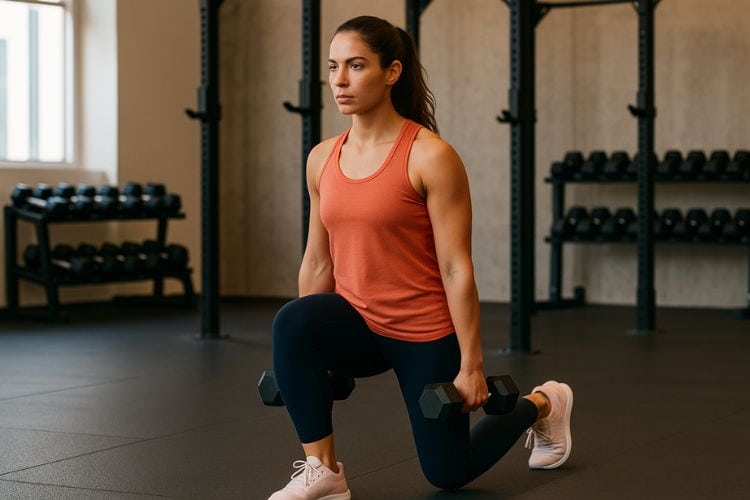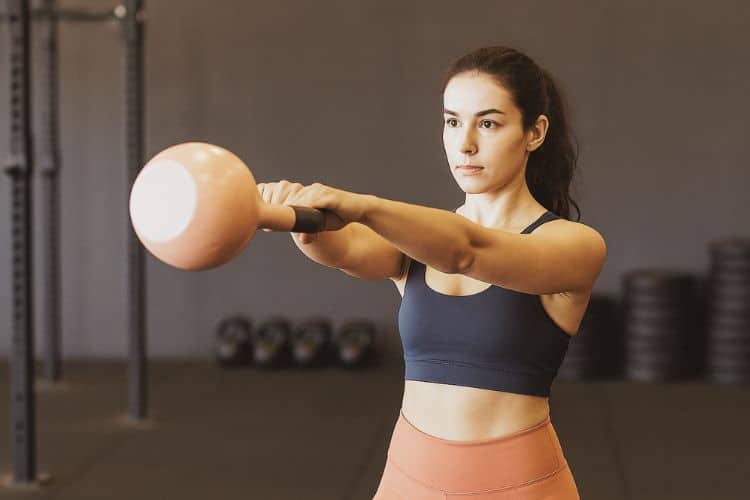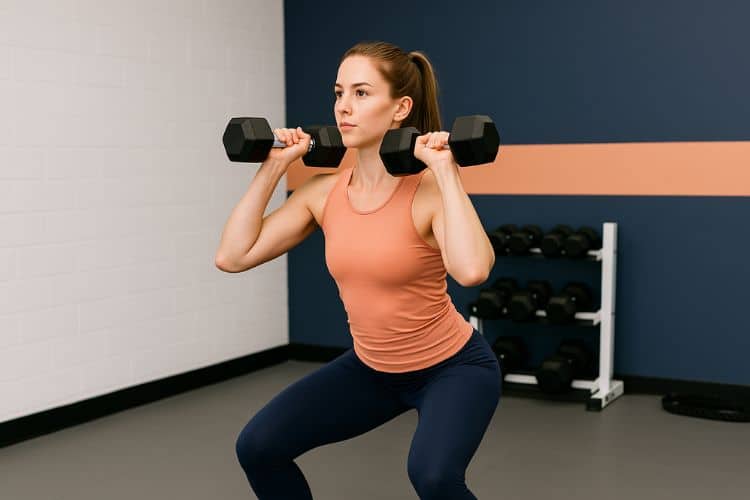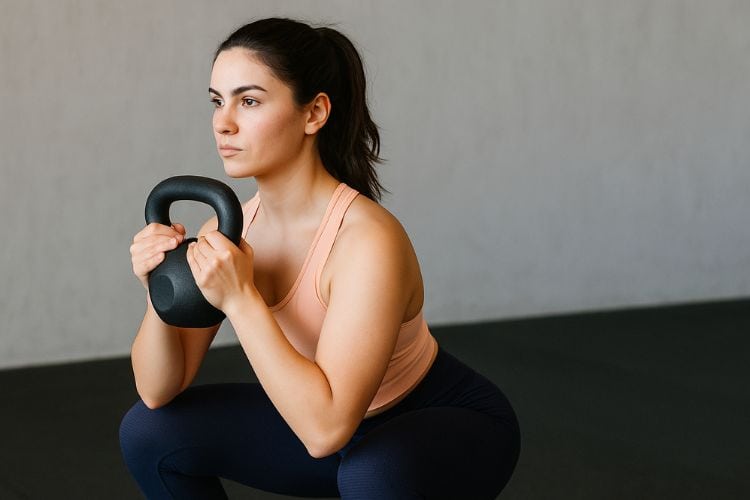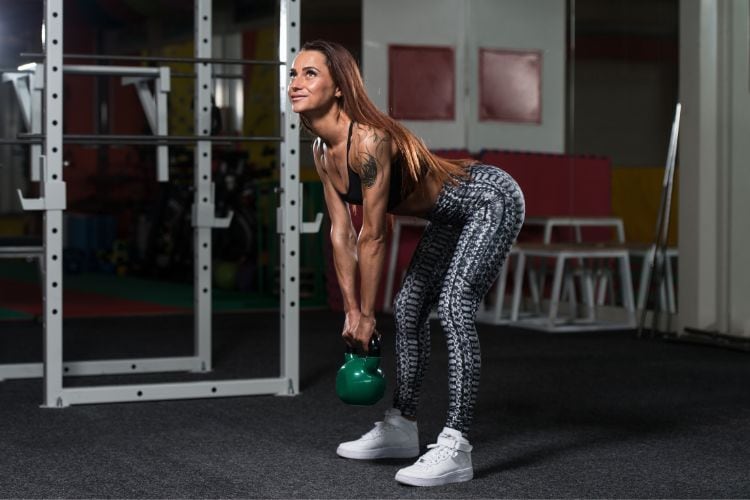7 Best Kettlebell Deadlift Variations for Strength and Fat Loss
Kettlebell deadlifts are among the most effective exercises for building lower body strength, improving posture, and boosting fat loss. Whether you’re a beginner or a seasoned lifter, adding kettlebell deadlift variations to your workout routine can help develop a stronger posterior chain—glutes, hamstrings, lower back, and core—while burning calories and improving functional fitness.
In this blog post, we’ll explore 7 kettlebell deadlift variations you can perform to spice up your workout, target different muscle groups, and enhance your results. These variations are perfect for home workouts, gym routines, or even outdoor training sessions. Let’s dive in!
Why Include Kettlebell Deadlift Variations in Your Workout?
Before we explore the variations, here’s why you should add kettlebell deadlifts to your fitness program:
- Develop strong glutes and hamstrings
- Improve core stability and posture
- Enhance grip strength
- Boost calorie burn for fat loss
- Improve functional movement patterns for daily life and sports
- Strengthen the lower back and reduce the risk of injury
Incorporating different kettlebell deadlift variations challenges your muscles in new ways, keeps your workouts fresh, and helps prevent training plateaus.
7 Kettlebell Deadlift Variations Workout
Let’s now break down 7 of the best kettlebell deadlift variations you can try in your next session:
1. Kettlebell Sumo Deadlift
The kettlebell sumo deadlift targets your inner thighs, glutes, and hamstrings, making it a great variation for lower body strength and hip mobility.
- Place a kettlebell on the floor in front of you.
- Stand with a wide stance, feet turned slightly outward.
- Hinge at the hips and bend your knees to grip the kettlebell handle with both hands.
- Keep your back flat, chest lifted, and shoulders pulled back.
- Drive through your heels to stand up straight, squeezing your glutes at the top.
- Lower the kettlebell back to the floor with control.
Benefits of the Kettlebell Sumo Deadlift
- Activates inner thighs and hip adductors
- Builds hip mobility
- Strengthens the posterior chain
- Safe for those with lower back concerns due to a more upright torso
2. Kettlebell Suitcase Deadlift Variations
The suitcase deadlift is performed with a kettlebell in one hand, forcing your core to stabilize against lateral forces.
- Stand tall with a kettlebell on one side of your body.
- Hinge at the hips and bend your knees to grab the kettlebell with one hand.
- Keep your torso square and your shoulders level.
- Drive through the floor to stand tall, resisting the kettlebell pulling you to the side.
- Lower back down with control and repeat.
Benefits of the Kettlebell Suitcase Deadlift
- Builds core stability and anti-rotation strength
- Strengthens obliques and lower back
- Improves grip strength
- Enhances functional strength for everyday activities
3. Kettlebell Romanian Deadlift Variation(RDL)
The kettlebell RDL puts more emphasis on the hamstrings and glutes while challenging your balance and hip hinge mechanics.
- Stand tall, holding a kettlebell with both hands in front of your thighs.
- Slightly bend your knees and hinge at your hips, pushing them back.
- Keep the kettlebell close to your body and your back flat.
- Lower the kettlebell down until you feel a stretch in your hamstrings.
- Drive your hips forward to return to standing.
Benefits of the Kettlebell Romanian Deadlift
- Isolates the hamstrings and glutes
- Enhances hip mobility
- Teaches proper hip hinge mechanics
- A perfect complement to squats for full lower-body development
4. Kettlebell Single-Leg Deadlift Variations
This variation adds a balance component, activating the core and stabilizer muscles.
- Hold a kettlebell in one hand or both.
- Shift your weight onto one leg and hinge forward at the hips.
- Extend the opposite leg straight behind you as you lower the kettlebell toward the floor.
- Keep your hips square and your back flat.
- Drive through the standing leg to return to the starting position.
Benefits of the Kettlebell Single-Leg Deadlift
- Improves balance and stability
- Strengthens glutes, hamstrings, and core
- Corrects muscle imbalances between legs
- Great for athletes and injury prevention
5. Kettlebell Double Deadlift variation
This variation involves using two kettlebells, increasing the load and muscle recruitment.
- Place two kettlebells on the floor in front of you.
- Stand with feet hip-width apart, with kettlebells between your feet.
- Hinge at the hips, grip a kettlebell in each hand.
- Keep your chest up, back flat, and drive through your heels to stand tall.
- Lower the kettlebells back to the ground with control.
Benefits of the Kettlebell Double Deadlift
- Increases strength and muscle-building potential
- Builds grip strength
- More challenging for the core and upper back
- Great for hypertrophy and overall conditioning
6. Kettlebell Deadlift High Pull
This hybrid movement combines a deadlift with an upper-body pull for a total-body conditioning effect.
- Stand with feet hip-width apart and a kettlebell between your feet.
- Perform a kettlebell deadlift to lift the bell.
- As the kettlebell passes knee level, pull it upward toward your chest, elbows high.
- Lower the kettlebell back to the start and repeat.
Benefits of the Kettlebell Deadlift High Pull
- Boosts cardiovascular conditioning
- Targets glutes, hamstrings, shoulders, and upper back
- Great for fat loss
- Improves power and athletic performance
7. Kettlebell Deficit Deadlift
The deficit deadlift increases range of motion, making your glutes and hamstrings work harder.
- Stand on a small platform or weight plate with a kettlebell on the floor between your feet.
- Hinge at the hips to grab the kettlebell handle.
- Maintain a flat back, engage your core, and drive through your heels to stand tall.
- Lower with control, feeling a deep stretch in your hamstrings.
Benefits of the Kettlebell Deficit Deadlift
- Enhances hamstring flexibility
- Builds strength at the bottom of the deadlift
- Increases range of motion
- Strengthens the posterior chain and grip
How to Structure a Kettlebell Deadlift Variations Workout
Wondering how to combine these variations into an effective workout? Here’s an example kettlebell deadlift workout plan:
Warm-Up
- 5 minutes dynamic mobility (leg swings, hip circles, glute bridges)
- Light kettlebell swings or bodyweight squats (2 sets of 15)
Main Workout (Repeat 3-4 Rounds)
- Kettlebell Sumo Deadlift – 12 reps
- Kettlebell Suitcase Deadlift – 10 reps per side
- Kettlebell Romanian Deadlift – 12 reps
- Kettlebell Single-Leg Deadlift – 10 reps per leg
- Kettlebell Double Deadlift – 8-10 reps
- Kettlebell Deadlift High Pull – 12-15 reps
- Kettlebell Deficit Deadlift – 12 reps
Cool Down
- Static stretching for hips, hamstrings, glutes
- Core work (planks, dead bugs)
Tips for Safe and Effective KD
- Master the hip hinge: Always initiate the movement from your hips, not your knees.
- Maintain a neutral spine: Keep your back flat and shoulders packed to prevent injury.
- Engage your core: Brace your abs throughout the movement.
- Start light: Focus on form before progressing to heavier kettlebells.
- Control the descent: Don’t let the kettlebell drop quickly—lower with control.
Why Kettlebell Deadlift Variations Should Be in Every Fitness Routine
Adding these 7 kettlebell deadlift variations to your workouts will help you build functional strength, improve your posture, strengthen your core, and burn fat effectively. Whether you train at home, in the gym, or on the go, kettlebells are a versatile tool to develop a powerful posterior chain and enhance total-body fitness.
Experiment with different variations to challenge your muscles in new ways, break through plateaus, and keep your workouts exciting. Start with 2-3 variations and rotate them into your weekly program for best results.
Want more workout and video guide?
Follow us on Pinterest, Facebook, and Subscribe to our Newsletter and Stay tuned for FREE downloads of our App coming soon!
Most Recommended

